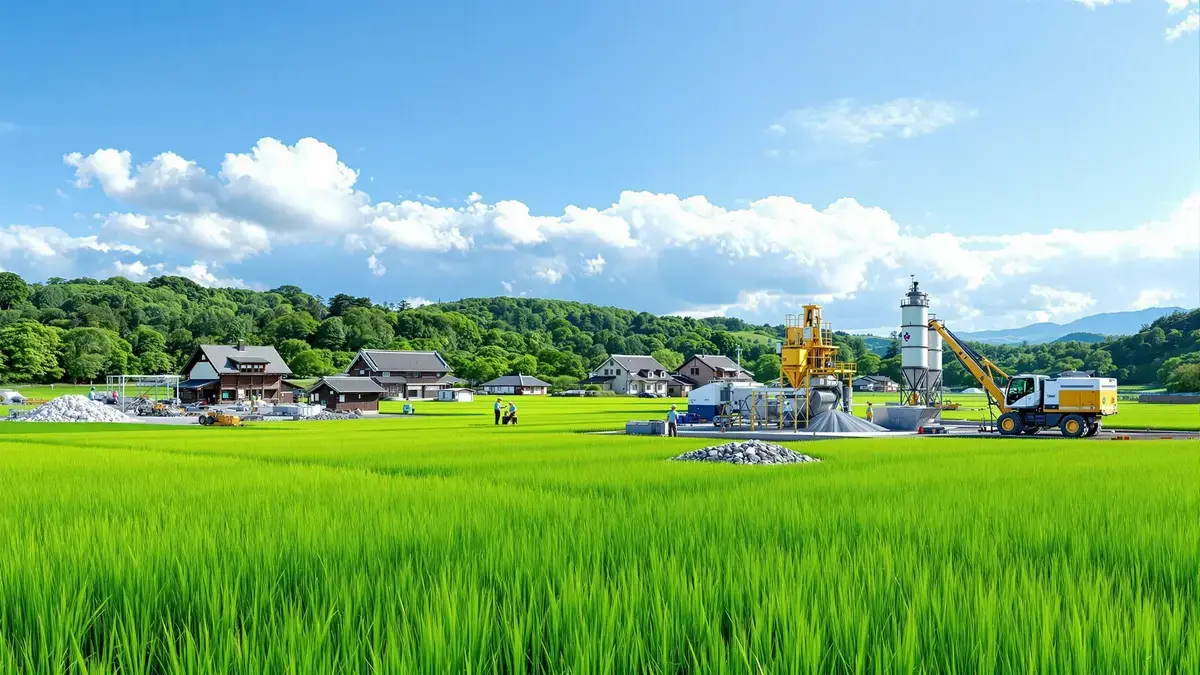Japan is innovating with a revolutionary cement that offers a seismic resistance superior by 50%. This advancement relies on the use of geothermal waste, transformed into Colloidal Silica Recovered from Geothermal Fluids (CSRGF), which enhances soil stability. By replacing traditional stabilization methods, this eco-friendly solution allows for a reduction in carbon emissions and aligns with a circular economy approach. The potential applications are vast, ranging from underground infrastructure to historic buildings.
The key information
- Japan innovates with a cement that is 50% more resistant to seismic activity.
- Utilization of geothermal waste to manufacture the material.
- The CSRGF enhances soil stability and reduces carbon emissions.
- Diverse applications, including in coastal infrastructure and preservation of historic buildings.
Japan Innovates with Earthquake-Resistant Cement
Japan, a country renowned for its seismic engineering expertise, is taking a significant step forward with the development of innovative cement, which is revealed to be 50% more resistant to earthquakes. This technological advance is not only impressive structurally but also relies on materials that redefine traditional practices in the construction field.
Innovative Use of Geothermal Waste
At the heart of this innovation is the use of geothermal waste for cement production. This approach not only valorizes materials considered as waste but also reduces the carbon footprint of the construction industry. By integrating these wastes, Japan positions itself as a leader in applying solutions that are both effective and environmentally friendly.
Soil Stability Enhanced by CSRGF
The cement depends on the use of Colloidal Silica Recovered from Geothermal Fluids (CSRGF), a compound that plays a crucial role in enhancing soil stability. This innovative material increases the resilience of structures against liquefaction, which poses a major risk during earthquakes, especially in seismic zones.
An Ecological Response to Construction Challenges
The development of this cement reflects a shift towards eco-friendly solutions in the construction sector, which has often relied on more environmentally harmful stabilization methods. By replacing conventional materials with sustainable alternatives like CSRGF, Japan paves the way for a significant reduction in carbon emissions related to construction.
This Unloved Animal Could Become a Valuable Ally Against Natural Disasters Here’s Why
Circular Economy and Sustainability
This project goes beyond mere technical innovation; it embodies a circular economy mindset. By transforming waste into useful resources, Japan demonstrates the importance of reusing materials to create sustainable solutions. This approach serves as a model for other countries wishing to integrate more virtuous practices into their construction processes.
Optimal Distribution and Hardening
Another significant advantage of this cement is its low viscosity, allowing for uniform distribution in the soil. This ensures an optimal hardening process, contributing to rapid and effective strength. This is particularly crucial in environments where time is of the essence, such as during the construction of critical infrastructure.
Diverse and Engaging Applications
The potential applications of this innovative cement extend well beyond immediate construction needs. Indeed, it could provide viable solutions for underground and coastal infrastructure, where resistance to natural phenomena is paramount. Furthermore, its ability to protect against erosion and sea level rise makes this cement an ideal candidate for coastal development projects.
Heritage Preservation and Carbon Neutrality
Moreover, the cement represents an environmentally friendly solution for the preservation of historic buildings that require special attention during renovation. By opting for this type of cement, construction professionals contribute not only to sustainability but also to the valorization of cultural heritage.
Towards a Sustainable Future
Finally, the prospects for utilizing this innovation are vast and extend globally. By 2050, Japan aims to achieve carbon neutrality, and the development of this cement could play a fundamental role in reaching this ambitious goal. This exemplary endeavor illustrates how the combination of technology and ecology can lead to a future where construction is both robust and respectful of our planet.








